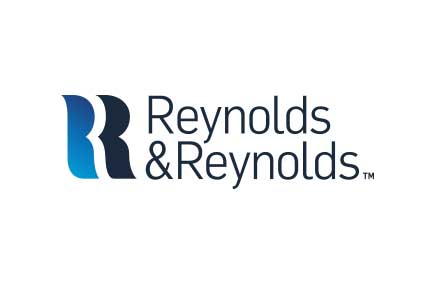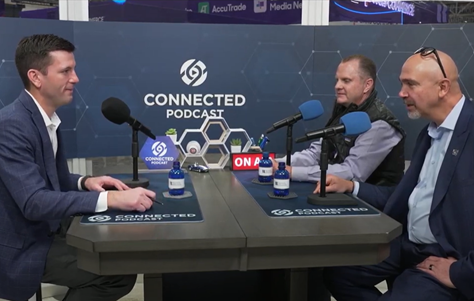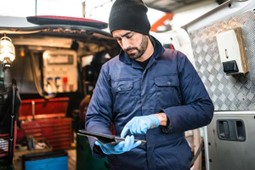Minimizing Contact With a “Hands-On” Experience

Article Highlights:
- How to greet efficiently during this time.
- Best practices for a "hands-on" experience.
In this episode of Reynolds’ video podcast, Connected, Todd Marcelle, CEO at GoMoto, addresses providing a safe and sanitary service greeting for customers.
Greg Uland: Hello, I’m Greg Uland, marketing director at Reynolds and Reynolds, and this is Connected, the podcast with best practices and ideas to help navigate what is happening in the automotive retail industry and the world today. As a COVID-19 virus continues to change our world and how we live and work daily, this podcast discusses ways to continue operating in this unprecedented social environment. On today’s episode, we have with us Todd Marcelle, CEO at GoMoto. Thanks for joining today.
Todd Marcelle: Thanks for having me, Greg. Appreciate it.
GU: Yeah, of course. Todd, before we dive in, can you give a little bit of background for everybody on what GoMoto does?
TM: Yeah, so GoMoto is a self-service kiosk platform that supports interactions, both on the check-in and check-out process for the service drive.
GU: Great. Thank you. So service is obviously very important. For dealerships, for a lot of them, it’s only part of the business that’s running or certainly running fully. So let’s start talking today about that check-in process, since that’s a big part of where GoMoto focuses. What are you seeing dealers do? How are they responding right now?
TM: Well, I think, one of the big challenges is certainly diminished volume of customers coming in for service, number one. Number two is they’re really trying to limit social interaction, right. Human-to-human, just with the CDC guidelines. With that being said, they’re focusing and really trying to drive appointments online to ensure that they have a steady flow and then, too, looking at ways to certainly create that opportunity. So, our platform, our kiosk, has obviously provided a big fit for the dealers that have them because it creates safety for the consumer and for the employee, with proper sanitation. We’re also seeing other elements where dealers have transformed their model, where they’re doing pickup and delivery of vehicles from consumers’ homes, which again, is a nice thing. It’s limited because you have capacity issues. But again, it’s a way of us thinking outside the box of how to react to our consumers. Because certainly some consumers do not have a desire to even come into the dealership. I’ve seen and heard great stories of dealers going to extraordinary lengths to provide education on their sanitation methods when picking up the vehicle, post vehicle, and prior to delivery. That’s something I really would recommend, educating your consumers on Facebook and LinkedIn and the mediums that you have about your processes that you have available for consumers, but also your sanitation methods and so forth.
GU: Good stuff. And on that note, with sanitation, can you dig into that a little bit, too? Obviously, your check-in kiosks and check-out kiosks, those are still devices that are touched by people. So really important to clean those. Can you talk a little bit about cleaning those and proper processes?
TM: Yeah, absolutely. So let’s not be fooled, right, we all have a phone, we all have an iPad, we have touch-devices. Certainly germs can be spread through any device, right? Or any surface with COVID. Certainly we understand that and we want to be responsive to that. So one thing we’ve actually done is upgrade all of our existing customers, we’ve provided them an anti-microbial screen that kills 99.9% of the germs, but it also allows any type of cleaning product to be used. So traditionally, when you use your phone or your iPad or a self check-out, any of those types of devices, you have to be very specific with the cleaners. They can’t be abrasive and so forth, because it could actually harm the sensitivity and the touch. By putting on the anti-microbial protector, it allows you to use any type of cleaning method. That’s really preferred for our dealers because it allows them to utilize elements that they have within the shop. So that’s really, really important. All of our stores have been handed a tool kit, as we say, on how to clean. So most of our stores have a process where they will educate the customer before they walk in, that the self check-in kiosk or check-out kiosks are available. Number two, is they actually explain that the kiosk will be sanitized prior to and after every single interaction. All of them have wipes and/or hand sanitizer available there so that if a consumer engages with it, they can ultimately sanitize their hands right there. Some dealerships have even provided gloves for consumers to utilize as well. So we’ve tried to think outside the box because, again, certain products aren’t available. So we’re helping dealers wherever we can source some of those products if need be.
GU: Good tips and something you mentioned there, which I hadn’t really thought about is, it’s all about the basic communication, right, and educating your customers on what’s available and use the hand sanitizer that’s sitting there, and use the gloves that are sitting there, and this is what we’re doing. So those are good points. One of the things that I’m hoping we can talk about a little bit, too, because I’m curious more than anything. Part of the GoMoto process and one of the things that it does is kind of provides a first pass at upsells for customers during the check-in process. So things like maintenance items, and alignments, and that type of stuff. Have you seen across the board maybe upsells going up or down or staying the same? Have there been any trends over the last couple of weeks?
TM: In general, our usage for our dealerships has increased in terms of consumers utilizing it to maintain social distancing. The one thing we’ve seen is, upsells have certainly not been as prevalent as they were pre-crisis, and simply being is that consumers are really coming in for must or necessary repairs. And that’s important, right? And dealers, we’re seeing, or kind of response to that as well, both in their kind of pre-MPI process that we initiated and then kind of the post-MPI process. Certainly they’re educating consumers to say, “Listen if your brakes are worn, and there’s a real safety concern.” But again, the simplest thing is, what I’m hearing from dealers is, we want to ensure we can correct whatever potential problem or issue is there, get the customer back their vehicle in a timely fashion, sanitized fashion and really maintain and build that trust and loyalty so that we can earn that repeat business down the line when that customer needs to make another investment.
GU: Very good. Very good. That is great to hear. Todd, I definitely appreciate all your time today and taking a few minutes to chat. While we have the audience and before we hop off, is there anything else that you want to touch on or anything you want to say?
TM: Just that, obviously we’re in an industry of inventors and entrepreneurs that have a desire to succeed and fight through it. Just like we’ve done through all the other major crises that we’ve faced we will come through this at the end. And it’s encouraging to see fixed ops continuing to be the lifeblood of the dealerships and helping our communities move forward in the right way. As I mentioned earlier allowing first responders all of that ecosystem to survive and continue to thrive in a challenging environment. So, the automotive industry, while challenging today, we will come out stronger.
GU: Very good. Well, thank you again, Todd. I do appreciate you coming on.
TM: Thank you. Appreciate the time.
GU: Absolutely. This has been Connected. Stay safe and we’ll see you on the next episode.
Continue to tune in often to see new episodes on best practices and tips for navigating the automotive industry during this unprecedented time.
Related Articles:
Earlier this year, I had the privilege of diving into a conversation with Ed Roberts, COO of Bozard Ford, and what struck me was how…
Key drop-off is one of the first impressions a customer has of your service drive. Both you and your customer want it to be as…
We live in an era where a simple tap on your phone can bring almost anything to your doorstep within hours. According to Statista, in…
Here in the North, we face the dreaded winter months. They’re full of stuffy noses, sore throats, and endless coughs. Although sicknesses like the flu…



















